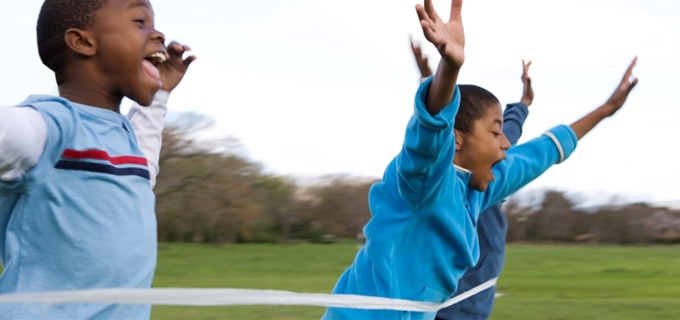Search for a doctor or hospital in your network.


Search for a doctor or hospital in your network.

Get News & Updates Directly To Your Inbox
 We all know that a concussion can be serious, but many of us don’t know its symptoms. Do you know what to do if your child gets one?
We all know that a concussion can be serious, but many of us don’t know its symptoms. Do you know what to do if your child gets one?Young children, teenagers and young adults have a higher risk because their brains are still developing. Here are some key things you should know to help keep your kids safe.
The Centers of Disease Control and Prevention reveals 2.3 million children and teens 17 and younger were diagnosed with concussions — or traumatic brain injuries (TBIs) — in 2022.
A TBI happens when a fall or blow to the head causes the brain to quickly shift back and forth. This jostling can damage the brain.
Football, bicycling and basketball are the top three activities that see the most TBIs in children and teens. Still, concussions don’t just happen on sport fields. Even children younger than 10 can suffer a concussion just horsing around on the playground.
Most people think a loss of consciousness is the tell-tale sign of a concussion. Not all people with a concussion lose consciousness, though. Other signs of TBI may be missed.
Watch for these subtle signs of a concussion:
Some symptoms may not show up for a few hours or even days after a head injury. Seek medical care right away if your child experiences:
Kids recover from concussions slower than adults. A child or teen who returns to the game while still having symptoms is at risk for serious, permanent brain damage. It’s crucial that kids be symptom-free and cleared by a doctor before restarting any activity.
After a concussion, rest helps the brain heal. Check with your doctor to learn how long your child should rest. Find out when they can ease back into sports and activities — and when they can play full throttle. It’s likely your child will need to sit out practices, games and exercise for a bit. He or she may also need to ease back into school. See if they can have extra time with tests and schoolwork.
There is no sure-fire way to prevent a concussion. Still, there are steps you can take to lower your child’s risk.
Of course, protection is not only about having a helmet. It’s about finding the right kind of helmet, making sure it fits properly and wearing it. The CDC offers helpful information. ![]()
Has your child ever had a concussion? How did you help them heal?
Originally published 8/13/2015; Revised 2023, 2024
Blue Cross and Blue Shield of Texas, a Division of Health Care Service Corporation,
a Mutual Legal Reserve Company, an Independent Licensee of the Blue Cross and Blue Shield Association
© Copyright 2025 Health Care Service Corporation. All Rights Reserved.
Verint is an operating division of Verint Americas, Inc., an independent company that provides and hosts an online community platform for blogging and access to social media for Blue Cross and Blue Shield of Texas.
![]() File is in portable document format (PDF). To view this file, you may need to install a PDF reader program. Most PDF readers are a free download. One option is Adobe® Reader® which has a built-in screen reader. Other Adobe accessibility tools and information can be downloaded at https://www.adobe.com/trust/accessibility.html.
File is in portable document format (PDF). To view this file, you may need to install a PDF reader program. Most PDF readers are a free download. One option is Adobe® Reader® which has a built-in screen reader. Other Adobe accessibility tools and information can be downloaded at https://www.adobe.com/trust/accessibility.html. ![]()
![]() You are leaving this website/app ("site"). This new site may be offered by a vendor or an independent third party. The site may also contain non-Medicare related information. Some sites may require you to agree to their terms of use and privacy policy.
You are leaving this website/app ("site"). This new site may be offered by a vendor or an independent third party. The site may also contain non-Medicare related information. Some sites may require you to agree to their terms of use and privacy policy.
Powered by Verint